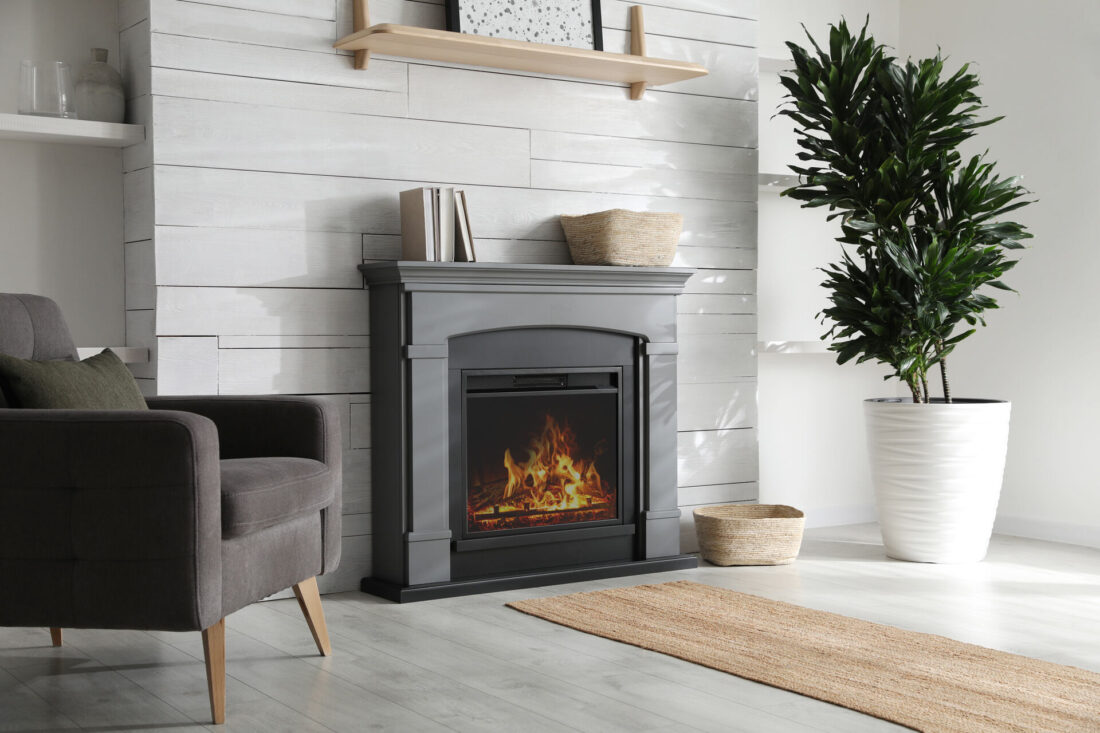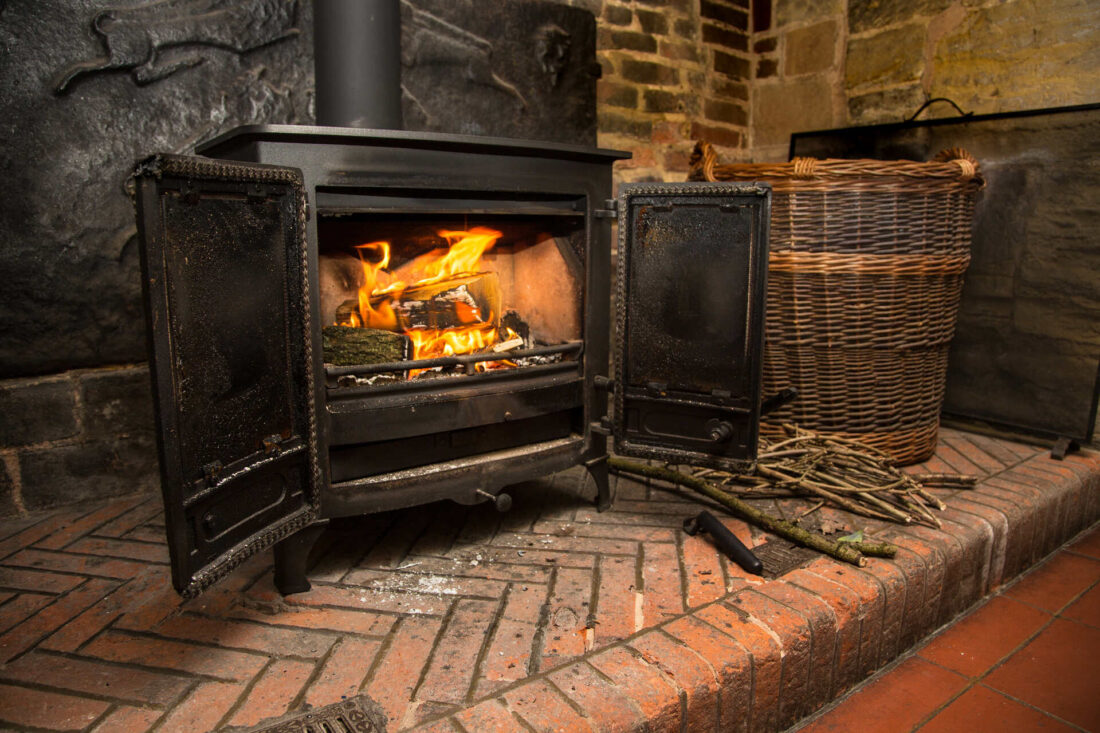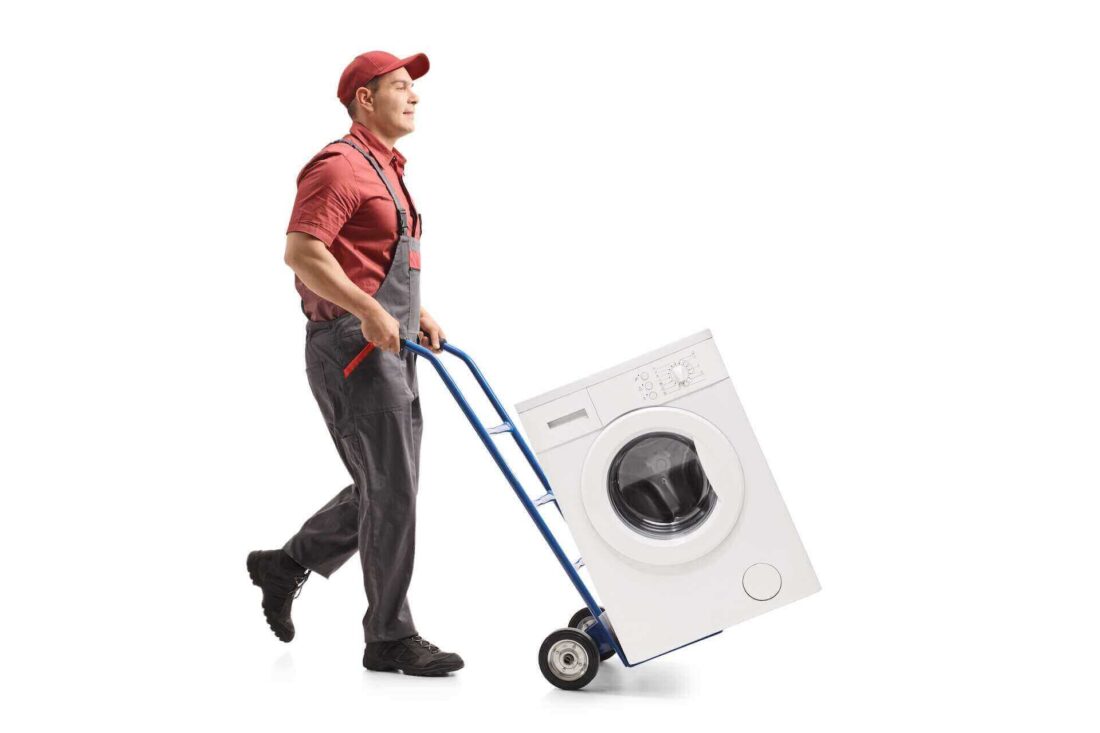Wood stove relocation across the country may seem like a daunting task, but with careful planning and the right approach, it can be accomplished without a fuss. If you want to take the appliance to your new home, this guide on how to move a wood stove will provide you with essential tips and steps to ensure a smooth and successful transition.


How to Move a Wood Stove to a New Home
Moving heavy stoves across the country requires careful planning and execution. Begin by disassembling the appliance and protecting its components. Teamwork is essential when lifting and moving this heavy appliance. Choose an appropriate vehicle, secure the load, and ensure it’s well-ventilated. Upon arrival, prepare the new location by considering placement and ventilation. Reassemble the stove systematically, ensuring a safe and functional wood stove installation.
The First Step in Moving a Wood Stove Is Getting to Know It
Before embarking on the journey of figuring out how to move a stove across the country, it’s crucial to become well-acquainted with your heating appliance. While your stove has likely been a reliable source of warmth in your home, understanding its anatomy and specifications is essential for a successful and efficient relocation.
Anatomy of a Wood Stove – Understanding What You’re Moving
Wood stoves are a complex heating appliance composed of several vital components. These components include the firebox, flue, legs or base, door, and damper. The firebox is where you load and burn wood, generating heat for your home.
The flue is responsible for venting smoke and gasses out of your home, typically connecting to a chimney or pipe. Legs or a base provide stability and prevent direct contact with combustible surfaces. The door allows access to the firebox, while the damper controls airflow and combustion within the stove.
Knowing your stove’s make and model is equally important. This information can be found in the user manual or on a nameplate attached to the appliance. Understanding the make and model allows you to access manufacturer guidelines for reinstalling the appliance.
Prepare for the Heavy Lift by Assessing the Weight and Size of Your Appliance
The weight and size of your wood stove can vary widely depending on its make and model. Smaller to medium-sized wood stoves typically weigh between 250 to 500 pounds, with dimensions ranging from 20 to 30 inches in width and depth.
In contrast, larger wood stoves can exceed 1000 pounds and have dimensions exceeding 40 inches in width and depth. Understanding the weight and size of your appliance will directly influence your relocation plan. It will help you decide whether you can manage the move independently or if hiring professional cross-country movers is necessary. Keep in mind that companies such as Long Distance USA Movers have extensive experience when it comes to handling heavy items.


The Pre-Move Preparations – Setting the Stage for Success
Before you start the process of relocating your wood stove across the country, thorough pre-move preparations are essential to ensure a smooth and successful relocation. These preparations lay the foundation for a safe and efficient relocation, reducing the chances of complications along the way.
How to Move a Stove by Yourself – Ensure a Safe Removal Route
One of the critical pre-relocation tasks is to clear a safe and obstacle-free path from your wood stove to the moving truck. This path will serve as the route for transporting the appliance and should be carefully surveyed and prepared.
Begin by examining the route from your appliance’s current location to the relocation truck. Take note of any potential obstacles such as furniture pieces, plain rugs or expensive carpets, and other items that may obstruct the way. Clear these obstacles to create a wide path, and allow easier maneuvering.
Additionally, pay special attention to tight corners, staircases, and doorways. Measure these areas to ensure they can accommodate the stove’s dimensions. If necessary, remove doors or disassemble any large furniture that may hinder the stove’s passage.
In cases where the path includes outdoor areas or uneven terrain, consider laying down plywood or other stable surfaces to facilitate the movement of the appliance. By addressing these potential obstacles, you can significantly reduce the risk of accidents, relocation mistakes, or damage during the removal process.
Gathering Essential Stove Moving Equipment
To safely move your wood stove, gather the necessary tools and equipment. A sturdy wood stove dolly or hand truck will be invaluable. It will allow you to roll the appliance instead of carrying it, reducing back strain and ensuring a smoother transition. Lifting straps offer added support and leverage, especially when dealing with heavy objects or navigating stairs and tight spaces.
Utilize relocation blankets – these thick, padded covers shield your appliance from scratches and dents during transportation. Secure the appliance in the truck with ratchet straps or tie-downs to prevent shifting during transit.
Sturdy work gloves will protect your hands and provide a better grip. Additionally, ensure your relocation team has appropriate safety gear, including steel-toed boots, safety glasses, and back support belts, as safety should remain a top priority throughout the process to prevent injuries.


A Step-By-Step Approach for Disassembling With Care
To ensure a successful and stress-free move of your wood-burning appliance across the country, disassembling it with care is a crucial step. This allows for easier transportation, reduces the risk of damage, and simplifies the reinstallation process at your new home.
Safe Techniques for Disassembling Wood Stoves
When it comes to disassembling your wood stove safely and methodically, follow these detailed steps. Begin by ensuring the appliance is completely cool and emptying any remaining ashes and wood from the firebox. Carefully remove detachable components like handles, door latches, and decorative trim, storing screws and small parts in labeled bags or containers.
If your stove is connected to a stovepipe or chimney, disconnect and remove it, possibly using tools like a wrench or screwdriver. For stoves with multiple sections, separate them, particularly the top and bottom sections for easier transportation. If applicable, remove the firebricks and the baffle from the firebox, packing them separately to prevent breakage.
Protect glass doors or windows by removing clips or fasteners and wrapping them with bubble wrap or relocation blankets. Throughout the process, label components and take photos as needed to ensure you can easily reassemble the parts correctly at your new location.
The Art of Protecting Components – Secure Packing Methods
To ensure the safety of your wood stove components during the relocation, you’ll need to employ secure packing strategies and use appropriate packing materials. Here’s how to protect fragile parts:
- Bubble wrap and packing paper – wrap delicate parts such as glass doors, firebricks, and decorative elements in bubble wrap or packing paper. This provides cushioning against bumps and vibrations.
- Sturdy boxes – use sturdy boxes for smaller components and parts. Label each box with its contents to make reassembly easier.
- Padding and cushioning – line the boxes with foam or packing peanuts to provide additional protection for fragile components. Ensure that there is no movement within the relocation boxes.
- Secure glass components – if your stove has glass components, such as doors or windows, protect them by adding an extra layer of cardboard or plywood over the glass and securing it in place.
- Cast iron components – for heavy cast iron components like stove doors, wrap them in blankets or furniture pads and secure them with straps to prevent scratching and damage.
The Main Event – Moving the Wood Stove
Relocating wood stoves is a significant undertaking requiring meticulous planning and execution. After disassembling and safeguarding the components, the core challenge lies in transporting the appliance itself. This step demands precise coordination, physical strength, and a keen eye for detail to ensure a successful and damage-free relocation.
Coordinating the Move Requires Teamwork
Efficient teamwork plays a crucial role in this process. Coordinating everything involves employing proper techniques for lifting and transporting heavy objects. Each team member should have a designated role during the relocation, with one guiding the stove and the others providing the necessary muscle.
Vehicle Considerations and Securing Stoves for Transit
Selecting the right vehicle is essential. Factors such as the stove’s dimensions, weight, and travel distance should influence your choice. Options may include pickup trucks, cargo vans, or moving trucks, depending on the specific requirements. Once the vehicle is chosen, securely fasten the appliance using heavy-duty straps, tie-downs, or ratchet straps.


Arrival and Reassembling Wood Stoves – Completing the Journey
Upon reaching the new location, the wood stove’s journey is far from over. The arrival and reassembly phase is the culmination of all efforts and marks the point where you can once again enjoy the warmth and comfort it provides. This stage requires attention to detail and a methodical approach.
Preparing the New Location and Setting the Stage
Before beginning the reassembly process, it’s essential to prepare the new location. This involves several crucial steps, including ensuring proper placement and ventilation. Carefully consider where the stove will be positioned, taking into account clearance requirements and safety regulations.
Adequate ventilation is critical to prevent the buildup of harmful gasses and ensure efficient combustion. Additionally, conduct pre-installation checks and preparations to confirm that the installation area is safe and compliant with local building codes.
Reassembly Tips and Tricks for Piecing It Back Together
Reassembling the stove requires a systematic approach to ensure it functions correctly and safely. Begin with the stove’s base or legs, securing them firmly in place. Reattach the fire bricks and baffle, ensuring they fit snugly and securely. Carefully place the main body of the stove back into position, aligning it with the chimney or stovepipe.
Reconnect the stovepipe or chimney to the stove, ensuring a tight and secure fit. Reinstall any detachable components, such as handles, door latches, and decorative trim. Verify that the glass or other glass components are correctly secured and free from any damage. Conduct a final check to ensure all screws, bolts, and fasteners are tightened properly.
Before firing up the stove, perform thorough checks for safety and functionality. Ensure there are no gas leaks, damaged components, or loose connections. If you’re uncertain about any aspect of the reassembly, consider seeking professional assistance to ensure everything is in perfect working order.
Reinstalling it correctly is very important. According to estimates from the US Fire Administration, wood stoves start more than 4,000 home fires annually, so it’s better to be safe than sorry.
Auto Transport
Move your car across the country in an open or enclosed trailer – for an affordable fee. We offer car transport as a standalone service, but you can bundle it with your household move and get a hefty discount.
Learn moreMoving Insurance
All your stuff is secure with Long Distance USA Movers, but in case something does happen to it, there’s a moving insurance policy in place. We offer both basic Valuation Coverage and Full Value Protection.
Learn moreStorage Services
Our spacious climate-controlled units will protect your things until the drop-off. No need to worry about them because all items are labeled and secure, and each customer gets a dedicated unit mixup isn’t possible.
Learn moreEmbracing Warmth on the Go – A Successful Cross-Country Wood Stove Adventure
Transporting heavy appliances across the country demands meticulous preparation, coordination, and attention to detail. By following our wood stove moving guide and techniques outlined above, you can embark on this journey with confidence, knowing that the wood stove will continue to provide reliability in its new home.
If you want a guaranteed safe stove moving journey, hire a professional long-distance moving company and their long-distance moving services. Reliable long-distance movers can make the entire relocation process easier, from professional packing services to safely moving even the largest appliances. So, contact us today at Long Distance USA Movers and rely on our cross-country moving services to take care of everything.
Frequently Asked Questions
What Are the Risks Associated With Moving a Wood Stove?
This process carries several risks, including physical strain from lifting heavy objects, damage to the appliance or home during transportation, and the potential for accidents if not handled properly.
What Tools Are Necessary for Safely Moving a Wood Stove?
Essential tools include a dolly, lifting straps, moving blankets, ratchet straps, work gloves, and safety gear for the moving team.
How Do I Protect the Glass Components of My Wood Stove During the Move?
To protect glass components, remove any clips or fasteners holding them in place and wrap them in bubble wrap or relocation blankets before securing them safely.
What Is the Best Way to Secure a Wood Stove in a Moving Vehicle?
Secure the stove in the vehicle using heavy-duty straps, tie-downs, or ratchet straps. Ensure it’s fastened tightly to prevent movement and damage during transit.
What Should I Do if I Notice Damage to My Wood Stove After Moving It?
If you notice damage to the wood stove after relocating, assess the extent of the damage. Depending on the severity, you may need to contact a professional for repairs or replacement. Document any damage for insurance claims if necessary.







